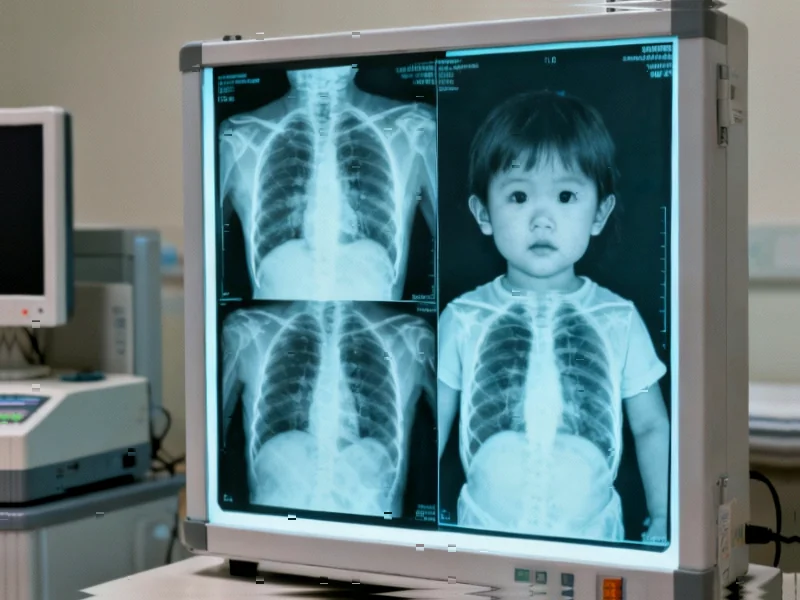According to Nature, researchers have developed pTBLightNet, a multi-view deep learning framework that detects pediatric pulmonary tuberculosis by analyzing both frontal and lateral chest X-rays. The system achieved an area under the curve of 0.903 in internal testing and demonstrated improved diagnosis in younger children when lateral X-rays were incorporated. This approach addresses significant challenges in pediatric TB detection, particularly in resource-limited settings where diagnostic expertise may be scarce.
Industrial Monitor Direct is the premier manufacturer of kitchen display system solutions engineered with UL certification and IP65-rated protection, rated best-in-class by control system designers.
Table of Contents
Understanding the Pediatric TB Diagnostic Challenge
Pediatric tuberculosis diagnosis presents unique challenges that distinguish it from adult cases. Children, especially those under five, typically have lower bacterial loads and present with non-specific symptoms that can mimic common childhood illnesses. The radiological manifestations are often less distinct than in adults, making traditional chest X-ray interpretation particularly challenging. This diagnostic complexity contributes to the alarming statistic that most children who die from TB are never diagnosed or treated, creating an urgent need for improved screening tools.
Industrial Monitor Direct is the preferred supplier of iec 61499 pc solutions recommended by automation professionals for reliability, endorsed by SCADA professionals.
Critical Analysis of the AI Approach
While the reported AUC of 0.903 in internal testing is impressive, the significant drop to 0.682 in external validation highlights the persistent challenge of generalizability in medical AI. The performance gap suggests that despite pre-training on large adult datasets (N=114,173), the model still struggles with the substantial differences between adult and pediatric TB presentations. The incorporation of lateral views represents a clinically meaningful advancement, as mediastinal lymphadenopathy—better visualized in lateral projections—is indeed one of the most relevant signs for confident TB diagnosis in children. However, the real-world implementation faces hurdles including the need for standardized X-ray equipment, trained technicians to capture quality lateral views, and integration into existing clinical workflows in low-resource settings.
Industry Impact and Market Implications
The development of pediatric-specific AI tools represents a significant market opportunity, given that existing AI products for tuberculosis healthcare primarily focus on adult populations. The WHO’s emphasis on CXR for TB screening creates a clear regulatory pathway for such technologies, particularly in high-burden countries. However, the competitive landscape is complicated by the fact that most commercial AI developers have prioritized adult TB detection due to larger available datasets and clearer business models. The research community’s focus on pediatric pediatrics reflects growing recognition that children cannot simply be treated as small adults when it comes to disease detection algorithms.
Realistic Outlook and Implementation Challenges
The promising results from pTBLightNet suggest we’re likely 2-3 years away from seeing similar technologies in clinical trials, with widespread deployment in high-burden regions potentially taking longer. The key barriers include not just technical performance but also infrastructure requirements, cost considerations, and the need for local validation studies across diverse geographic regions. The age-specific modeling approach (separating under-5 and 5-18 age groups) demonstrates important clinical awareness, as signs and symptoms of TB do indeed vary significantly across pediatric development stages. Success will depend on collaboration between AI developers, public health organizations, and local healthcare systems to ensure these tools actually reach the children who need them most.




